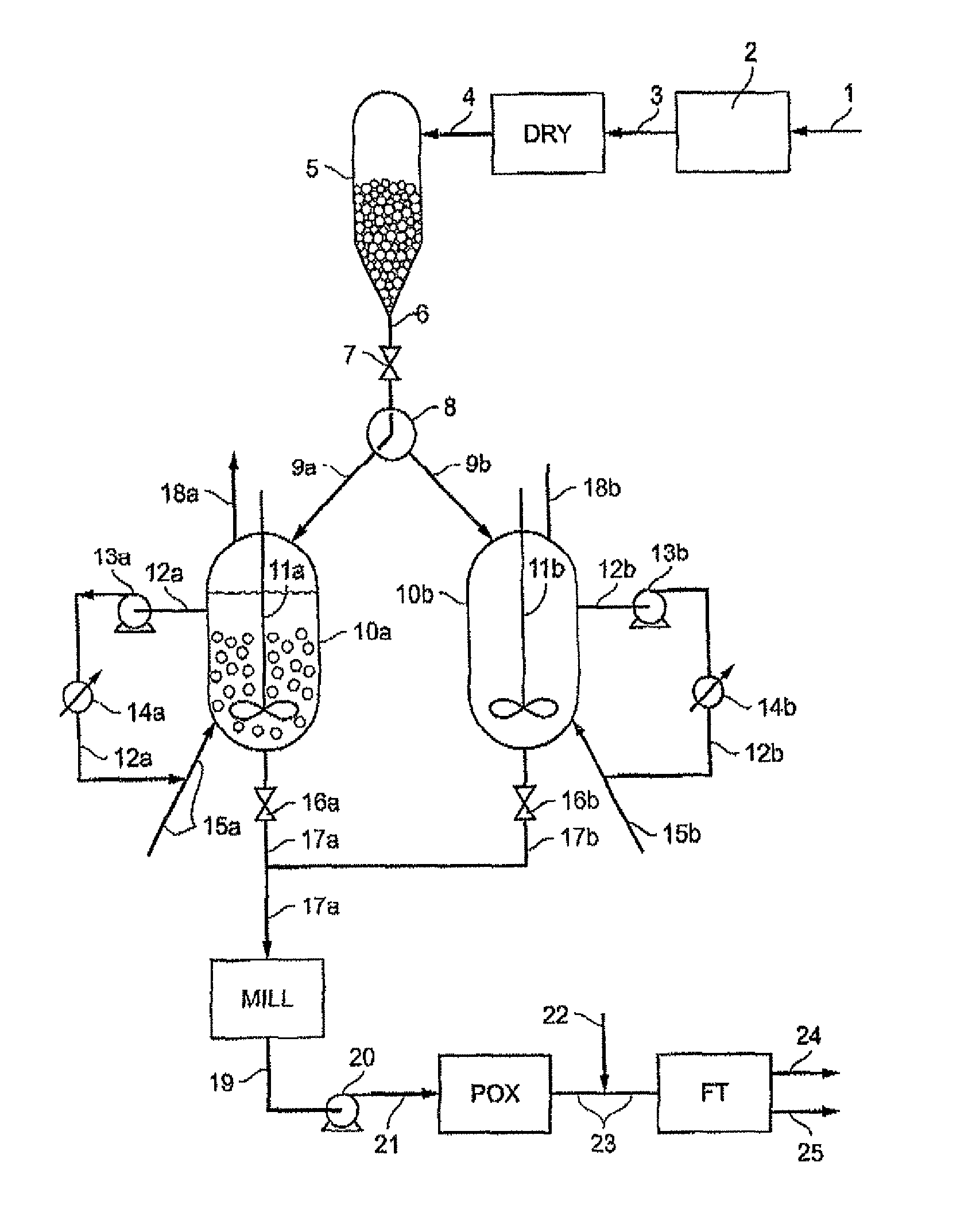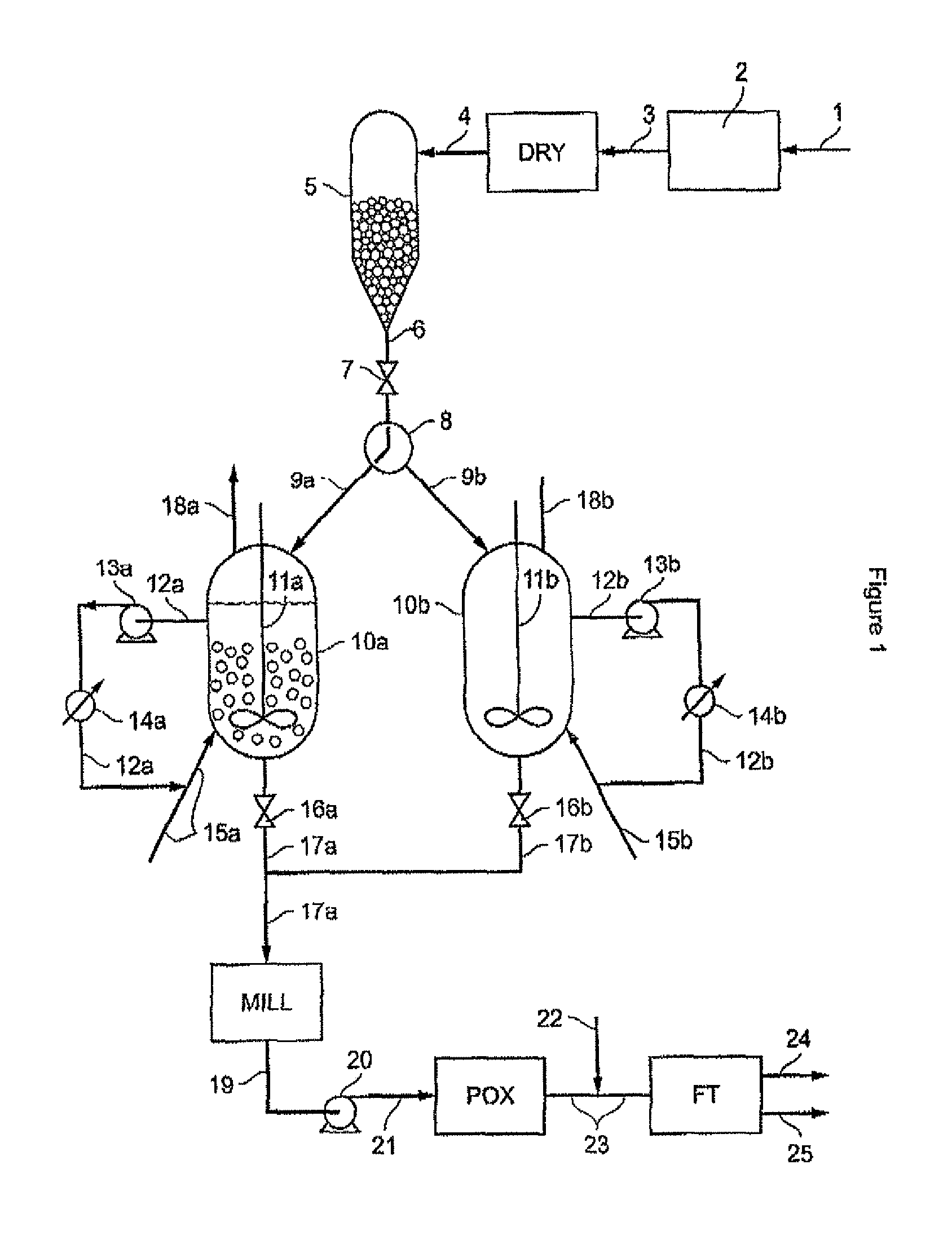Process for converting biomass to produce synthesis gas
a technology of biomass and synthesis gas, applied in the direction of combustible gas production, waste based fuel, efficient propulsion technology, etc., can solve the problems of brittle fragments and easy subsequent milling
- Summary
- Abstract
- Description
- Claims
- Application Information
AI Technical Summary
Benefits of technology
Problems solved by technology
Method used
Image
Examples
Embodiment Construction
[0033]The invention thus proposes a process for transforming heavy carbonaceous material comprising lignocellulosic biomass, in which:[0034]a) a stream of biomass in the form of initial solid fragments with a characteristic dimension in the range 1 to 20 mm is introduced into a liquid L1 comprising more than 60% by weight of carbon and hydrogen to obtain a polyphase mixture comprising at least one liquid / solid mixture;[0035]b) said liquid / solid mixture undergoes a maturation step at a temperature in the range 250° C. to 320° C. for a residence time of at least 10 minutes, to obtain a mixture of solid heat-treated fragments in a liquid L2, and optionally a gas G2;[0036]c) said solid heat-treated fragments mixed with at least a fraction of L2 are milled to obtain a suspension of solid in the divided form with a characteristic dimension of less than 150 micrometres;[0037]d) at least a fraction of said solid suspension in the divided form undergoes partial entrained bed oxidation POX to...
PUM
| Property | Measurement | Unit |
|---|---|---|
| temperature | aaaaa | aaaaa |
| temperature | aaaaa | aaaaa |
| temperature | aaaaa | aaaaa |
Abstract
Description
Claims
Application Information
 Login to View More
Login to View More - R&D
- Intellectual Property
- Life Sciences
- Materials
- Tech Scout
- Unparalleled Data Quality
- Higher Quality Content
- 60% Fewer Hallucinations
Browse by: Latest US Patents, China's latest patents, Technical Efficacy Thesaurus, Application Domain, Technology Topic, Popular Technical Reports.
© 2025 PatSnap. All rights reserved.Legal|Privacy policy|Modern Slavery Act Transparency Statement|Sitemap|About US| Contact US: help@patsnap.com


